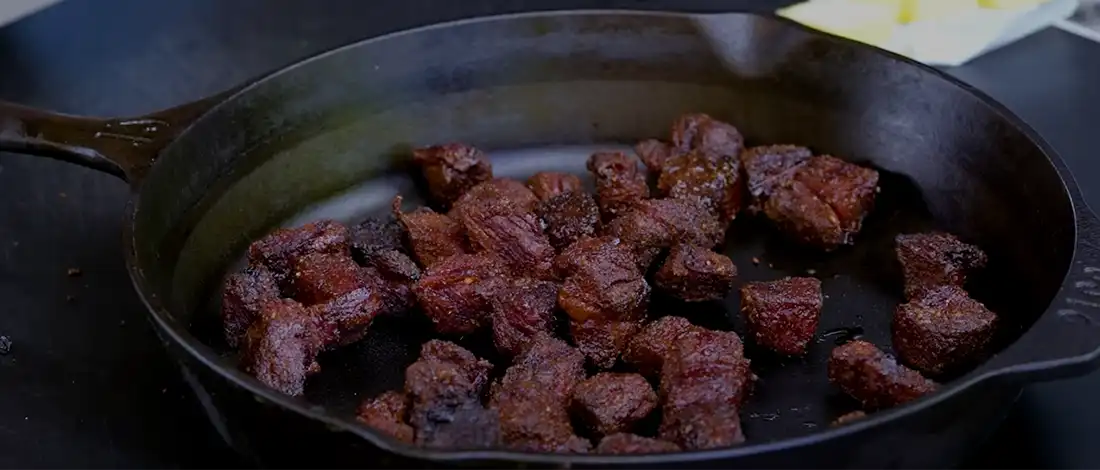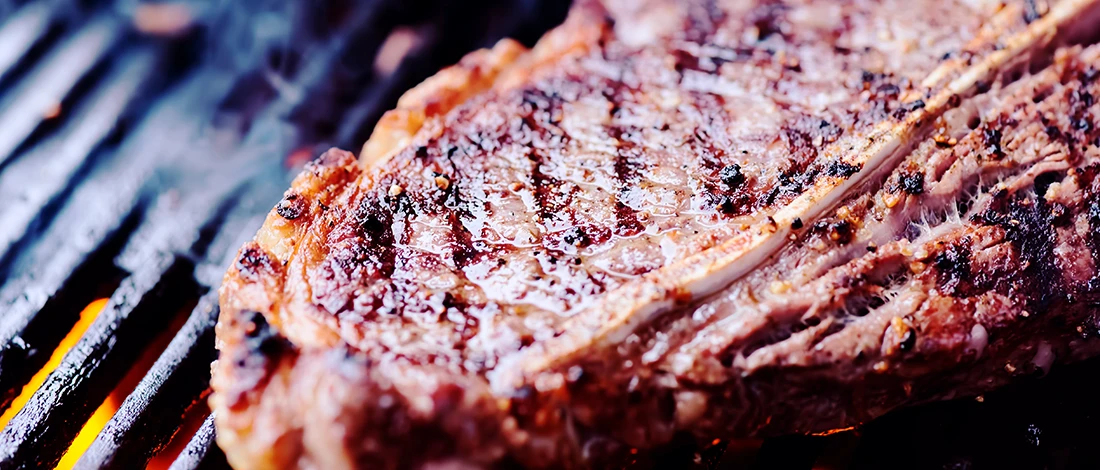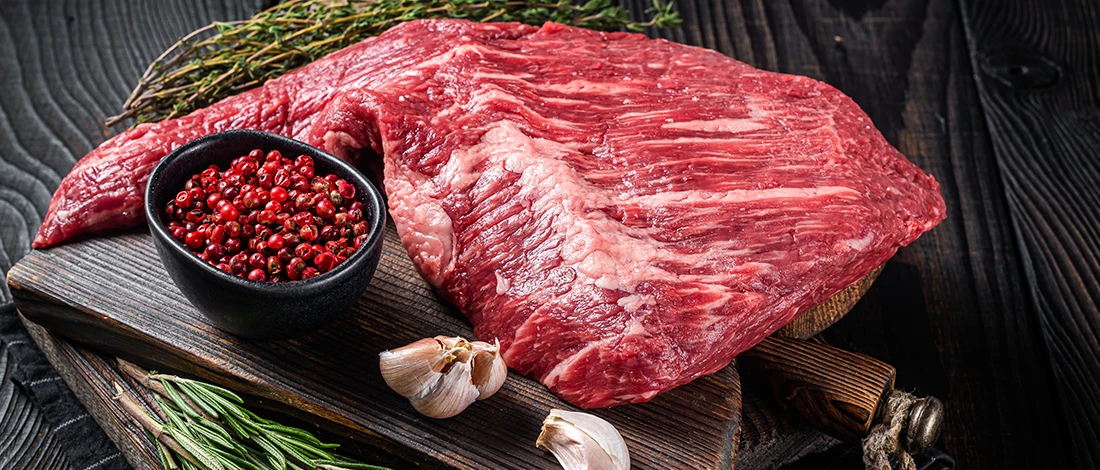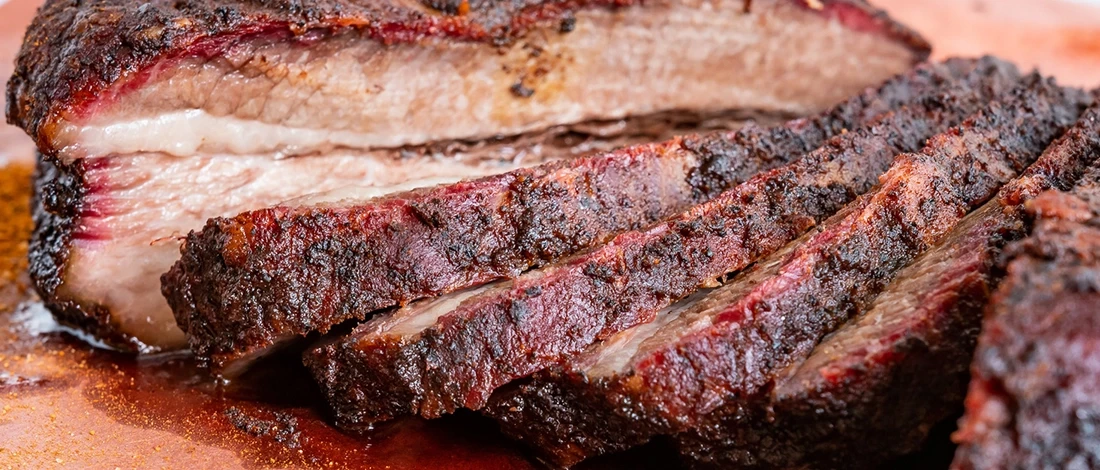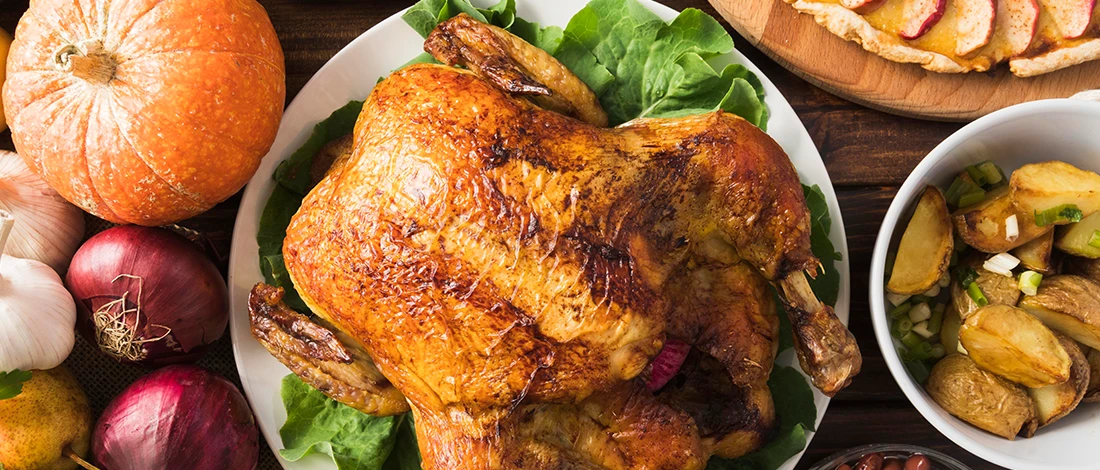The name burnt end may not seem appealing to many at first, but to a meat lover like me, these gorgeous brisket bites conjure images of a delicious, rich BBQ treat.
I talked to my local pitmaster to learn everything about burnt ends and had a few shots making them in my own backyard. I’ve finally perfected the cooking methods for this unique dish, and today, I’ll share everything you need to know about burnt ends.
Let’s get into it.
Quick Summary
- Burnt ends are caramelized meats from pork belly and beef.
- Traditional burnt ends have a good amount of bark on at least one side hence the term burnt.
- The point muscle from the brisket is used for most tender-style burnt ends.
What Are Burnt Ends?

Burnt ends, also called bark, are cubed, caramelized meats that have been slowly smoked and are known for their sweetness and buttery texture. They are almost as creamy as butter and are made from brisket or pork belly.
Burnt ends aren't burnt despite their name. They have a chewy, burnt-appearing BBQ bark crust that tastes like smoked meat and spices, with a crispy, crunchy, charred appearance.
Here are the differences between brisket and pork belly burnt ends.
Brisket Burnt Ends
Brisket burnt ends are chunks of point brisket chopped, sauced, and smoked. The most traditional and popular beef burnt ends are these delicious pieces of juicy, smoky meat.
Brisket burnt ends originated from Kansas City when Bryant's Barbeque offered free samples to queued customers.
With the help of Kansas City-born food critic Calvin Trill, Bryant's Barbeque's burnt ends won over the hearts and palates of BBQ enthusiasts across the country.
Pork Belly Burnt Ends
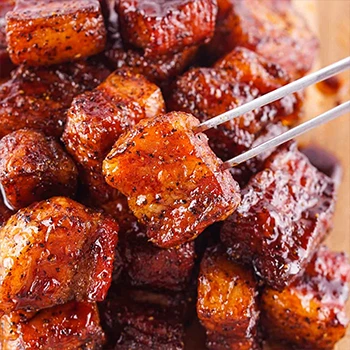
Cubed pork belly meat is slow-smoked, sauced, and finished to produce pork belly burnt ends with a caramelized, sweet, buttery flavor.
While pork belly burned ends are prepared for their purpose, entire brisket burnt ends were created to decrease food waste using the leftover brisket from sliced brisket sandwiches.
After discovering how tasty burnt brisket ends are, pitmasters began preparing pork belly meat similarly.
Around 48% of unprocessed pork belly is fat [1]. The brisket point is typically 50% when cut and cooked [2].
You can therefore cook brisket point and pork belly meat similarly and get similar results even though they come from two different animals.
Also Read: Pork Butt Burnt Ends
How To Make Brisket Burnt Ends

Cooking burnt ends often involves the following steps:
- Separate the point and flat on your whole packer brisket.
- Cut the tip and fat cap to 1/4 inch thick with a sharp knife after removing any hard fat that may still be present. Season both sides with a dry rub.
- The brisket should be slow-smoked for a long time over low heat for the best results.
- The oven should be heated to 250°F to roast beef brisket. The cooking will take about 1 to 1 1/4 hours per pound.
- After the internal temperature reaches 195°F, please remove it from the smoker and chop it into cubes about 1–1 1/2 inches.
- Sauce your smoked brisket in sweet Kansas Style BBQ sauce or any desired barbecue sauce.
- For an additional hour or two, the smoke-burnt ends in an uncovered aluminum foil pan. When you take them out, they need to have soaked up the sweet sauce and will have a crunchy exterior and juicy interior.
- Let it rest before serving with a side of choice.
"Use a simple rub of kosher salt and black pepper for a classic Kansas City-style smoked brisket to get nice burned edges while letting the beef's taste dominate."
- Aaron Franklin, American Pitmaster
Related Articles:
Pro Tips For Making Delicious Burnt Ends
Below are my tips for making delicious burnt ends.
1. Separate The Point From The Flat
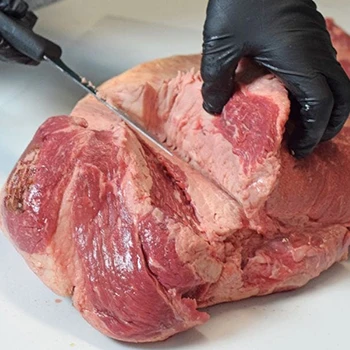
The flat and the point are the components of a whole brisket, commonly known as packer brisket.
The flat is the primary cut, which you will uniformly slice for brisket, whereas the point is the fattier, more atypically shaped portion of the brisket. Before placing the flat on your pellet grill, clip the point end off it.
Separating these sections increases the surface area that will be exposed and provide the most potent flavor.
2. Choose The Right Wood Pellets
Burnt ends are well known for having a distinct, potent BBQ flavor. Therefore the pellets may be the most crucial flavor layer here! In general, the more smoked the briskets are, the better they taste because the flavor is in the smoke.
I recommend using a premium 100% hardwood pellet like hickory wood for its potent flavor. All that surface area will produce a lot of smoke flavor, so use a high-quality pellet.
Also Read: How Are Wood Pellets Made?
3. Make Your Barbecue Sauce The Day Before
When making burnt ends, you bring the point ends to the smoker for one more brief smoke in a sauce you love.
The sauce can merge its flavors if prepared a day in advance. While making the sauce for this dish, go heavy on brown sugar, molasses, or Coke.
What To Serve With Burnt Ends?

You should serve burnt ends with baked beans, coleslaw, roasted potatoes, or mac and cheese.
I assure you that your guests will enjoy these tiny smokey bits, no matter what you decide to serve them with.
Generally, if it's something you would typically see and eat with other sorts of BBQ dishes, it should also work well with your BBQ burnt ends.
FAQs
What Do Burnt Ends Taste Like?
Burnt ends have a deep sweetness and rich smoky taste due to the caramelization process and fat rendering.
Are Burnt Ends Pork or Beef?
Burnt ends are usually beef. However, pork belly has also become a popular choice lately.
Why Are They Called Burnt Ends?
They are called burnt ends because the meat has been cooked to charring on the exterior. Burnt ends, however, are not burned.
How Do You Tenderize Burnt Ends?
You tenderize burnt ends by using olive oil and barbecue sauce. Then cover the container with aluminum foil and put it back on the smoker. The liquid breaks them down, so they are more tender.
What Is the Best Meat to Make Burnt Ends?
The best meat to make burnt ends is from the brisket point. It’s fatty, highly marbled, and thinner than the rest of the brisket, so it looks more burnt than the rest of the meat. Another delicious choice is pork shoulder burnt ends.
References:
- https://www.ncbi.nlm.nih.gov/pmc/articles/PMC4540268/
- https://fdc.nal.usda.gov/fdc-app.html#/food-details/168607/nutrients

